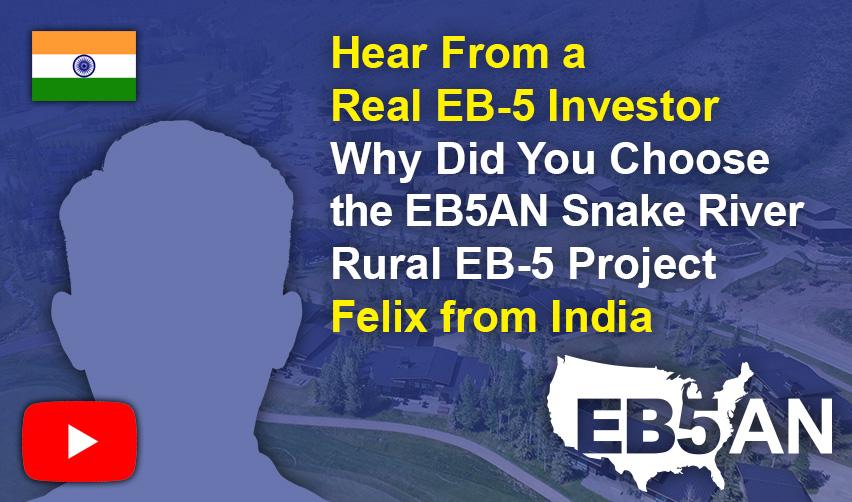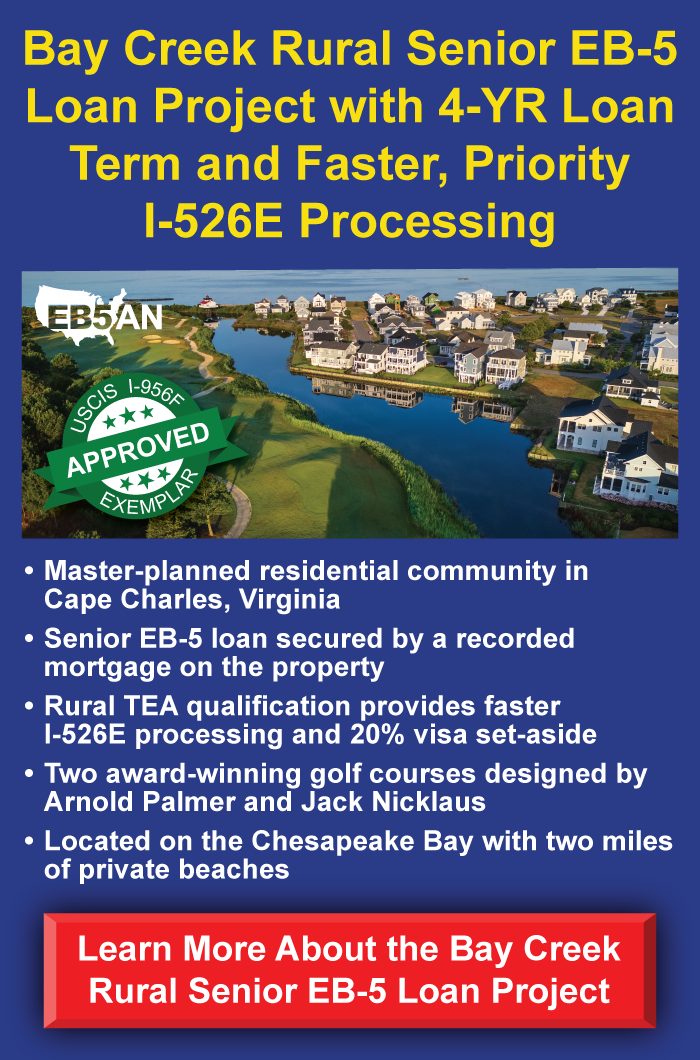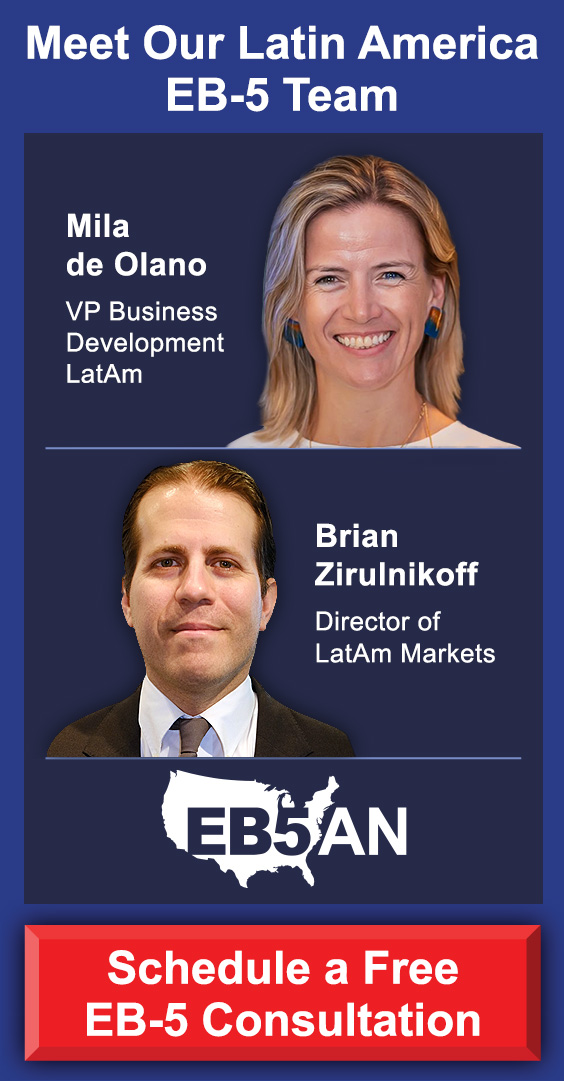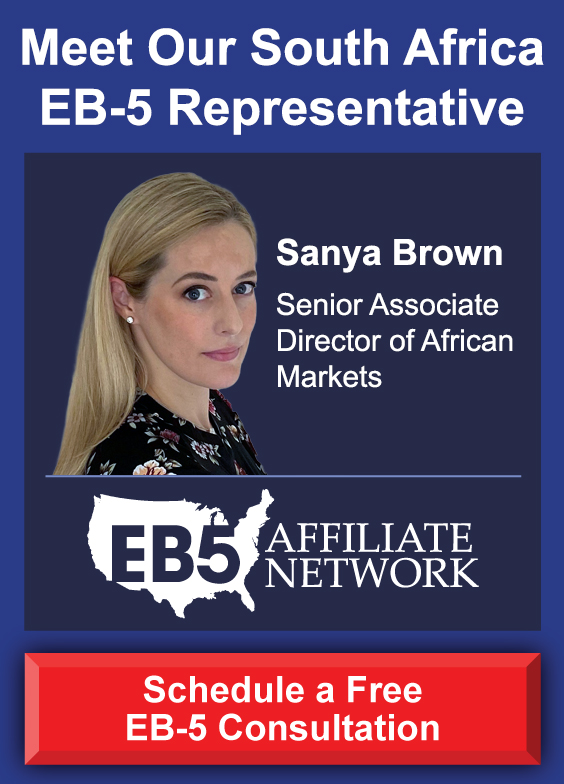As an Indian national, I was always looking for greater career and academic opportunities for myself and my family. After living in Canada for some time, moving to the United States opened up many doors for us—but we needed a permanent immigration solution to remain here long-term.
After a long search, we decided that the EB-5 visa was the safest option for us and invested in the Snake River Sporting Club rural project (now closed). This was virtually the only direct path to U.S. Green Cards for us, allowing us to become permanent residents very quickly.
I’m thrilled to have received approval for my I-526E petition in only 8.5 months. In this post, I tell my story and explain how others can make a successful EB-5 investment with a fast approval.
Watch Felix’s Full Interview
Watch Felix’s Interview Highlights
Background and Move to the U.S.
Selecting an Immigration Attorney
Researching Regional Centers
Factors in Project Selection
Choosing the Snake River Sporting Club Project
Working with EB5AN
Advice for Future Investors
Background and Move to the U.S.
I moved to the United States from Canada, where I had been living, in August 2017 for a professional opportunity. The role matched my career goals in the biopharmaceutical industry, so I felt confident about the change. In my first months, I traveled for work across different parts of the country. That travel helped me see how many job options and research centers there are here. I began to think I might stay longer than I first planned. My family joined me in 2019. By then, I had settled into my role and found life in Massachusetts to be both challenging and rewarding.
Considering Visa Options
When I first arrived, I did not plan to stay long term. I expected to return to Canada after about three years, which is why my family remained behind at first. Over time, as my work took me from state to state, I grew to appreciate the range of careers and top schools in Massachusetts. In 2019, I talked with my wife about moving here too. She works in life sciences and quickly found a fitting role in the greater Boston area.
As Canadians, we both used TN visas under the USMCA treaty (formerly NAFTA). These visas let us work here for up to six years. I also thought about the H-1B route, but with roughly 800,000 applicants in the lottery, I knew it would be slow. That led me to look at the EB-5 program as a more direct way to secure our future.
Taking Up a TN Visa
My wife and I applied for TN status early on and used it for six years. She moved over once her job offer came through in 2019. Having two TN visas allowed us to live and work here with peace of mind while we weighed our long-term plans. We saw strong school options and career growth for our children, which made us consider residency beyond a short-term stay.
Deciding to Pursue EB-5
By late 2019, I realized I wanted our family to have stable status in the U.S. We did not want to juggle visa renewals or face deportation risks. The EB-5 path offered a route to permanent residency for myself, my wife, and our children. It seemed the best fit for our goals: a clear path to a green card, work authorization, and travel freedom under advance parole (AP). We decided to move forward.
Selecting an Immigration Attorney
I began by talking with the lawyer my company used. They had little EB-5 experience, so I knew I needed a specialist. I asked a friend for recommendations and searched online. In total, I spoke with about ten immigration attorneys. Then I narrowed the list to five or six and emailed each a set of detailed questions about service fees, timelines, and success rates. After those interviews, I chose Fred Voigtmann in California. His clear answers and proven track record made the decision easy.
Preparing Source of Funds Documents
Even before I hired my attorney, I had started gathering my records. I knew EB-5 requires clear proof of where each dollar came from. My funds were in Canada and the U.S., so I collected bank statements, wire transfer receipts, tax returns, and employment records. I watched the videos and read the blogs published by EB5AN. Those resources explained the source-of-funds rules in simple terms and helped me prepare in advance.
Once I signed with Fred, I worked closely with his team. In about four to five weeks, I had organized and submitted every required document. They reviewed each file, sent back quick feedback, and helped me fill any gaps. From signing our agreement to final submission, the whole process took about two months.
Advice for Hiring an Attorney
- Pick deep EB-5 experience. General immigration attorneys may not know key EB-5 rules.
- Talk to multiple firms. Compare how fast they reply, how well they explain the steps, and what support they offer.
- Check tax knowledge. They don’t need full tax-code mastery, but they should understand common issues around money sourcing.
- Ask about project types. Rural versus urban TEA choices affect your wait times significantly.
- Prepare questions. Use checklists from trusted sources, and ask for former client references and success rates.
Researching Regional Centers
I started exploring regional centers in 2023. A friend suggested a few names, and I looked at online blogs and webinars. EB5AN’s materials stood out: they posted clear updates, project stats, and past approval records. Other centers often lacked transparency. Some claimed “boutique service” but had no track record to back it up. I valued clear data on job creation, money deployment dates, and loan terms. Having that level of detail made it easy to compare centers and narrowed my search to a few top choices.
Factors in Project Selection
I used five main criteria to pick a project:
- Rural TEA designation. It offers priority processing and a lower investment threshold.
- Short capital commitment. I wanted my money working fast, but still meeting USCIS rules.
- Developer reputation. Past approvals and solid finances gave me confidence.
- Exemplar approval. That shows USCIS has already reviewed the project’s plan, though it was not a deal breaker.
- Job creation. Clear evidence that the project had met or would meet its job targets was critical.
I read each project brochure and timeline, noting when capital would be deployed, how long loans would run, and what the exit plans looked like.
Choosing the Snake River Sporting Club Project
In July 2023 I chose the Snake River Sporting Club rural EB-5 project. It fit my criteria even without an exemplar approval at that time. The project outline showed early loan deployment, a specific loan term, and clear job-creation milestones. It was in a rural TEA zone, which meant I could invest at the lower threshold and get priority in the queue. The developer had a good record, and the brochure listed work already completed and future plans. That mix of factors made Snake River the right choice for me.
Rural TEA vs. Urban TEA
The rural TEA option was important because it gives priority processing and a lower minimum investment than urban TEA. More so, as Canadian parents, we wanted our oldest child to avoid the F-1 student visa process. She will start university soon, and with rural TEA we already had her EAD (work permit) and AP (travel permit) approved along with her Form I-526E. We now wait only for her conditional green card. Choosing rural TEA secured her place without extra paperwork or visa hoops.
Form I-526E Approval Timeline
After I submitted my Form I-526E, the wait felt long but steady. I checked USCIS processing times every week. From the date of filing to the approval notice, it took about eight and a half months. That timing fell right within the posted range. Getting that approval was a huge relief and marked a key milestone on our path to permanent residency.
Role of Job Creation
Job creation is the heart of EB-5. It drives investment into local areas and helps communities thrive. The Snake River project brochure clearly listed jobs already filled and those planned for the coming months. Knowing that the project had met many of its targets gave me confidence that my investment would support real U.S. jobs and meet USCIS standards. That clarity reduced risk and solidified my decision.
Working with EB5AN
My experience with EB5AN was smooth and transparent. They laid out each step—from initial webinars to final filings—with checklists and deadlines. The educational videos and blog posts gave me a head start before I signed on. Their escrow partner provided clear wiring instructions. Whenever I emailed the team, I got prompt, professional replies. Every staff member knew my case details and kept me on track. Their organized approach turned a complex process into a series of clear actions.
Advice for Future Investors
If you decide EB-5 is your route, start now. Rules can change, and deadlines can move. You can use a partial upfront investment and complete the rest later—this gives you time. Research multiple regional centers. Compare their track records, project lists, and client feedback. Choose a project that matches your goals: faster work permit, lower capital, or shorter commitment. Stay organized with spreadsheets and checklists. Keep an eye on USCIS processing times and policy updates. And above all, pick reliable partners—your attorney and regional center will guide you through each step.
I wholeheartedly recommend my immigration attorney and EB5AN. Fred Voigtmann’s clear guidance on source of funds and filings saved time and worry. EB5AN offered a range of vetted projects and kept me informed at every stage. Their transparent communication, proven track record, and strong client support made my EB-5 journey feel secure and well-managed. If you want a clear path to U.S. residency through EB-5, working with them is a choice I endorse.







